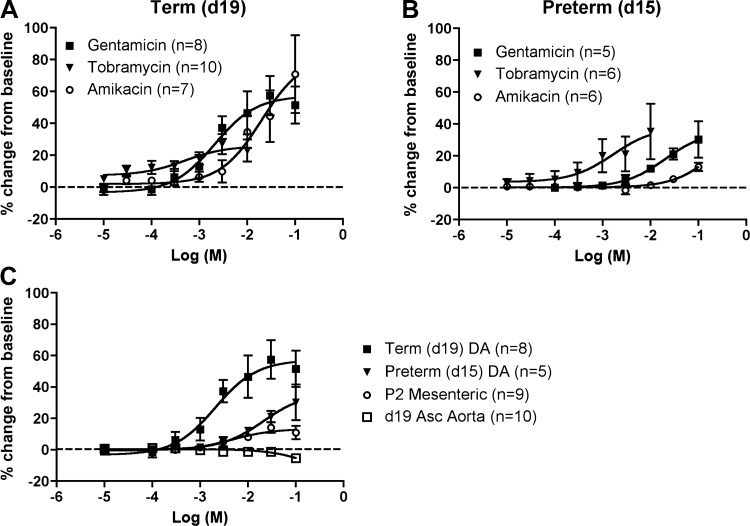Fig. 2.
Aminoglycoside-induced DA relaxation. A: response of the term [day 19 (d19)] DA to increasing concentrations of 3 aminoglycoside antibiotics, shown as percent change from baseline diameter. Each of the antibiotics caused a significant concentration-dependent increase in the DA diameter (P < 0.01; baseline diameter, 193 ± 18 μm, 212 ± 31 μm, and 193 ± 33 μm for gentamicin, tobramycin, and amikacin, respectively). B: response of the preterm (d15) DA to increasing concentrations of 3 aminoglycoside antibiotics, shown as percent change from baseline diameter. Each of the antibiotics caused a significant concentration-dependent increase in the DA diameter (P < 0.01; baseline diameter, 149 ± 15 μm, 151 ± 32 μm, and 167 ± 20 μm for gentamicin, tobramycin, and amikacin, respectively). C: gentamicin stimulated greater relaxation of the term than preterm DA (P < 0.01; data from A and B). Gentamicin induced less relaxation of 3rd- to 4th-generation mesenteric arteries of 2-day-old mice (P2; baseline diameter, 123 ± 6 μm) than the term DA (P < 0.01) and did not affect the ascending (Asc) aorta of term (d19) gestation mice (baseline diameter, 459 ± 14 μm). Data shown as mean ± SE. The gentamicin dose-response curve in term gestation mice (1 condition in A) was published previously as a commentary item in a general review article (40).

